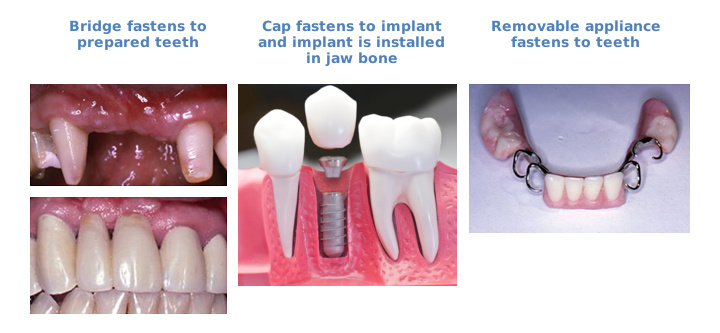It is generally important, but not always necessary, to replace a tooth that has been lost. Not replacing a lost tooth may result in teeth drifting to a different position that makes eating more difficult or looks bad. Additionally when teeth drift to a different position they may be harder to clean completely, which may cause new cavities or gum disease. Replacing a missing tooth will maintain your current chewing ability and appearance.

False teeth can be made so that the patient can or cannot remove them. Removable false teeth either merely rest on the gums or are fastened to natural teeth or dental implants in a way that the false teeth can be removed by the patient. Non-removable false teeth are fastened to natural teeth or dental implants in a way that the false teeth cannot be removed by the patient. While removable types are typically the least costly, they are also potentially, but not always, the least natural with deficiencies of look, feel and function. The most common types of non-removable false teeth are a dental bridge and single tooth replacement (single implant to which is attached a crown).
All false teeth need to be checked regularly by a dentist because false teeth can wear and break, teeth used to fasten the false teeth can get a cavity or gum disease, fracture, or become loose, and special parts that connect false teeth to an implant can loosen or break.
